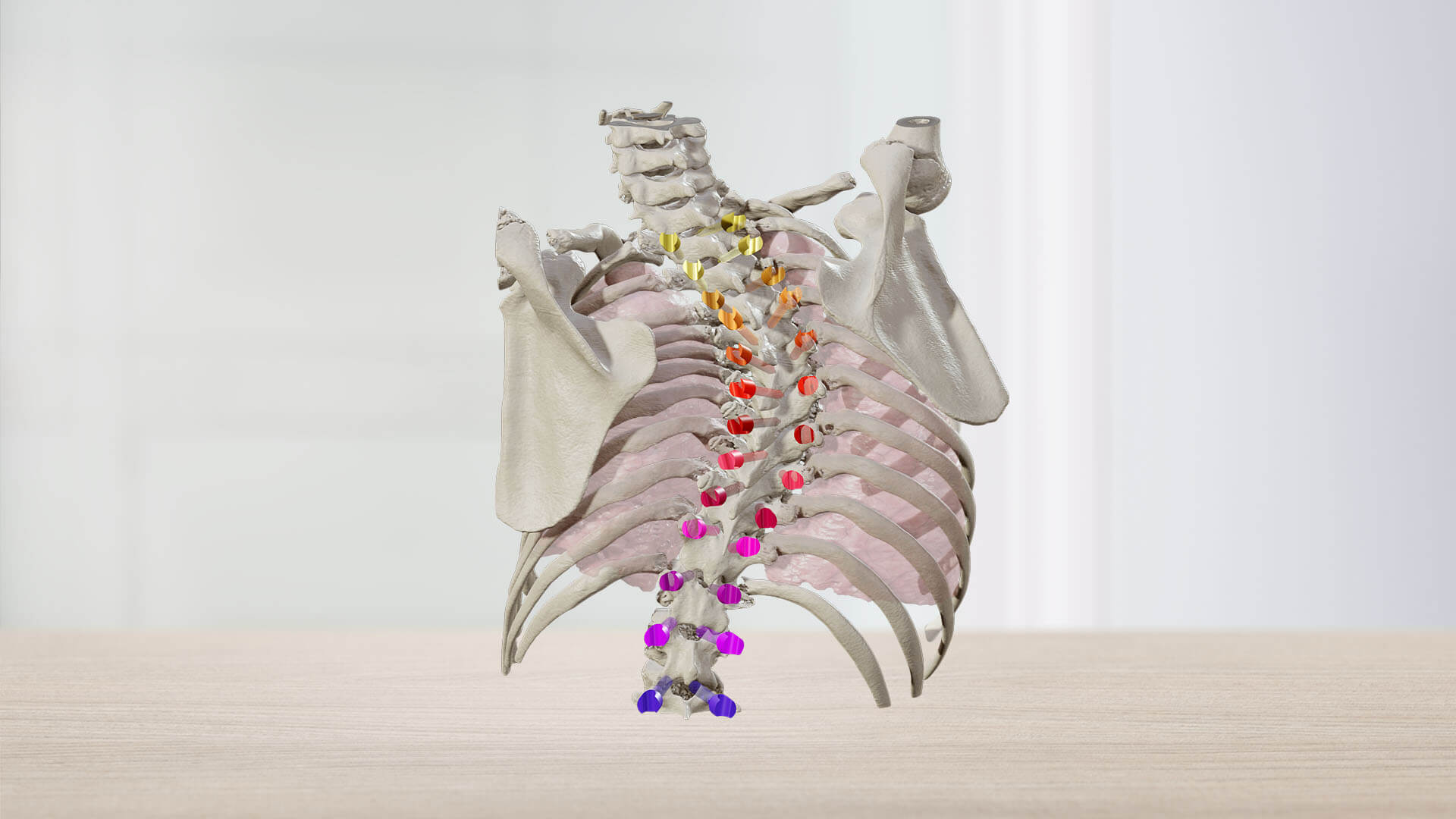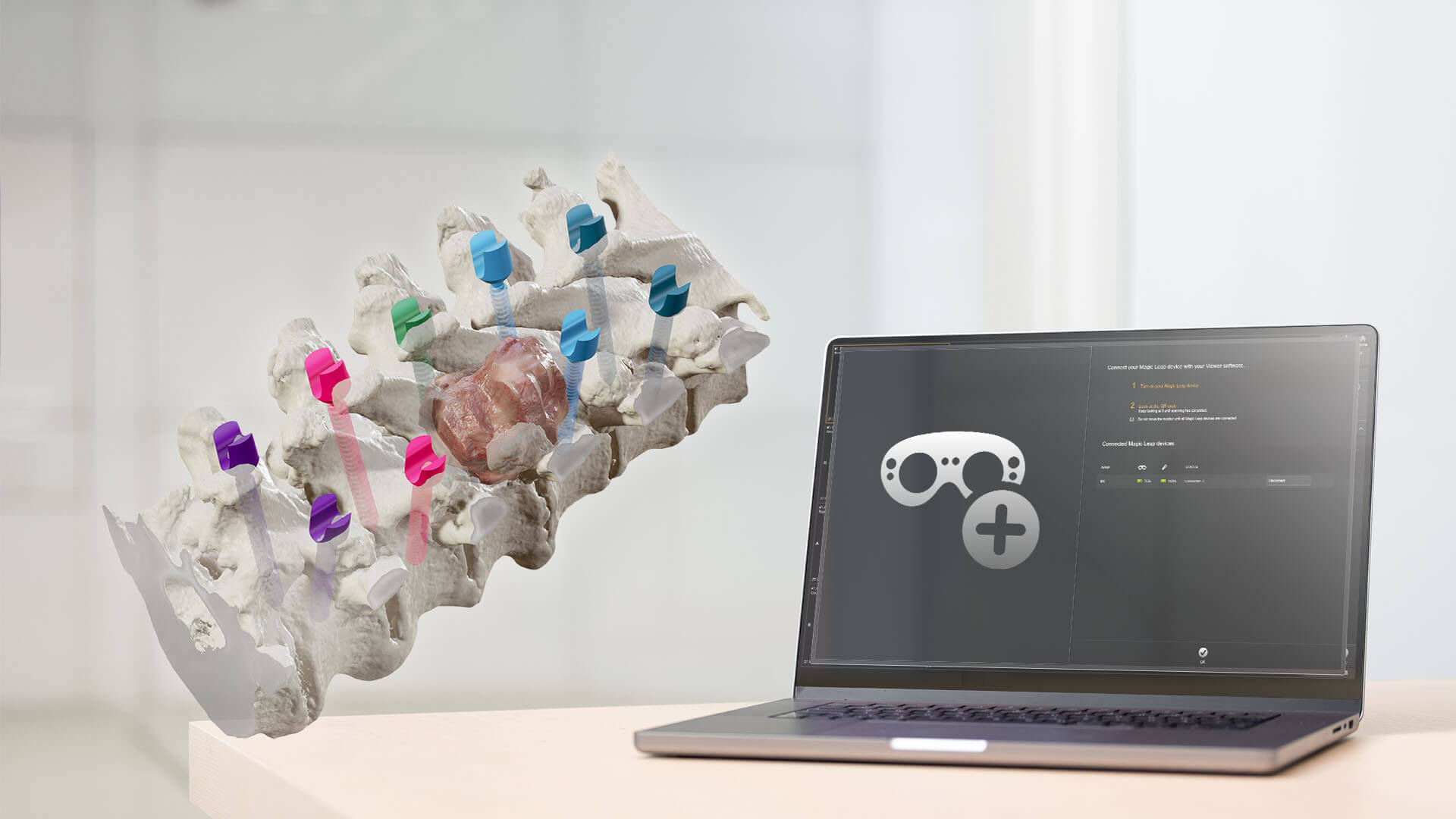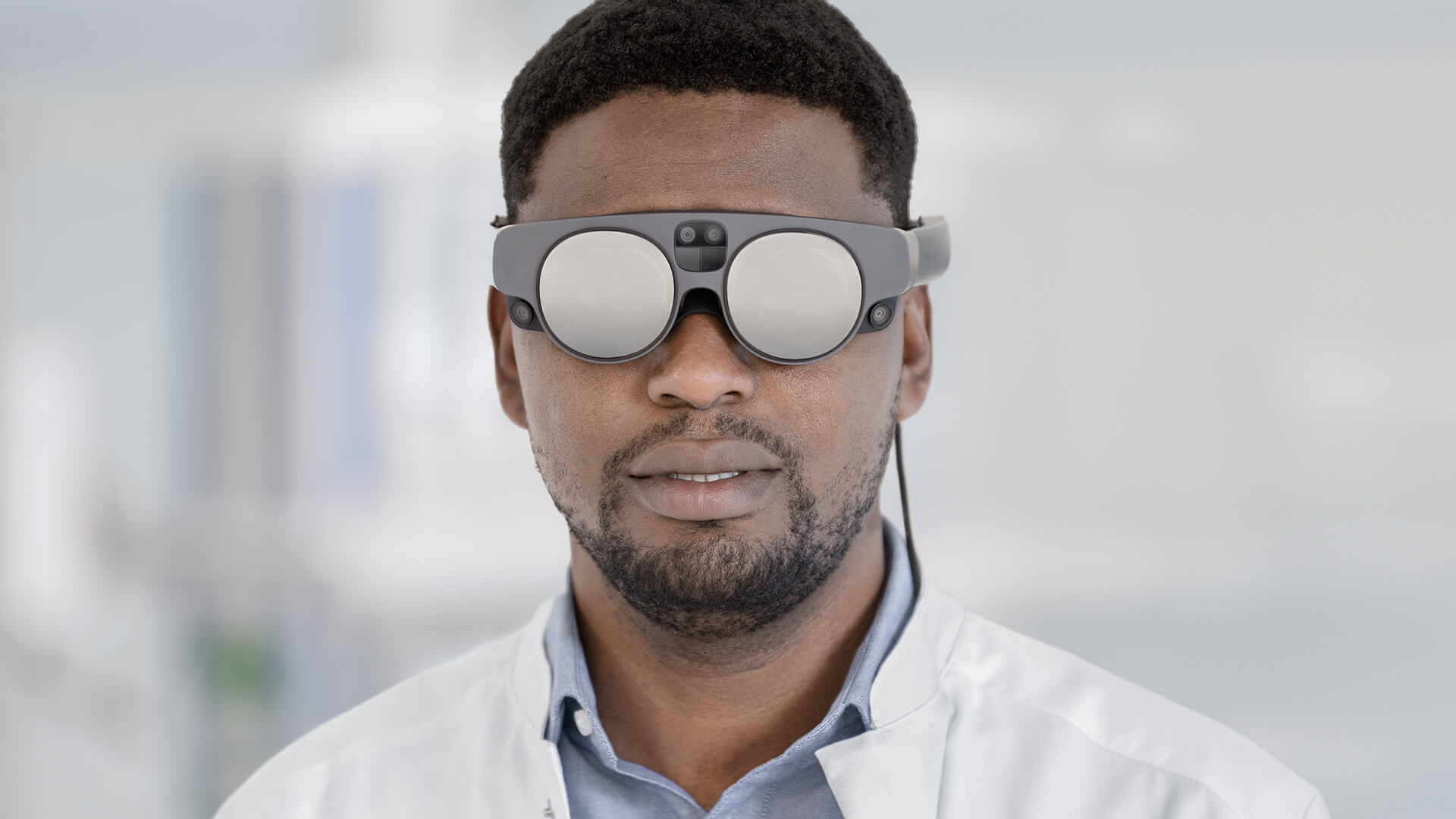Review plans for spine surgery in 3D. The Mixed Reality Viewer1 is a software that works in tandem with Brainlab Elements to produce hyper-realistic 3D patient data. In the context of spine surgery, this software enables medical professionals to review planned surgical procedures as well as explore anatomical structures and planned implant positions.
Accurate3D visualization
The Mixed Reality Viewer can display an accurate and complete 3D visualization of patient-specific surgical plans. When it comes to spine procedures, it can support medical teams in better preparing for complex cases including trauma, degenerative or the resection of tumors. It can also be used to review critical structures including nerve routes and the spinal canal.
Immersivemedical education
Medical students and residents have the opportunity to increase their understanding of patient anatomy and evaluate surgical approaches in a team with the Mixed Reality Viewer. By offering features like multi-user sessions, instructors can also use the Mixed Reality Viewer to train students in an accessible, interactive and immersive 3D environment.
Informativepatient consultation
Patient consultation sessions can be taken to the next level with the Mixed Reality Viewer. With this technology, patients can see their specific procedural plan in hyperrealistic 3D and better understand their diagnosis and the surgical approach.
Discover our products.
Experience innovation.
Step into the future.
Uncover the next generation of surgical solutions
Technical features of
mixed reality for spine cases
Spine planning review enters a new dimension with the use of mixed reality. By leveraging the potential of this approach, users can quickly and easily assess complex spine deformities, review surgical plans for screw placements and benefit from access to multiplanar reconstructions in 3D.
Innovation isn’t always free, but our demos are.
Find your future workflow today.
Expand your perspective
with the Mixed Reality Viewer
With a single click and a glance, your room is digitized for spatial computing. Images are transferred from the Elements Viewer software on screen into the room in front of you with the help of the Magic Leap spatial computing platform.


1. Start Elements Viewer
Access patient data from PACS and load it into the Elements Viewer

2. Boot your Magic Leap Device
Boot your Magic Leap 2 headset and connect it to WiFi

3. Scan QR Code
Scan the QR code on the screen with your headset

4. Step into an immersive 3D model
Dive into patient data and interact with both virtual 2D images and 3D models
Not yet commercially available in several countries. Please contact your sales representative.
Sign up now, see the future of medtech later.
Our innovative surgical solutions are always just one click away.






